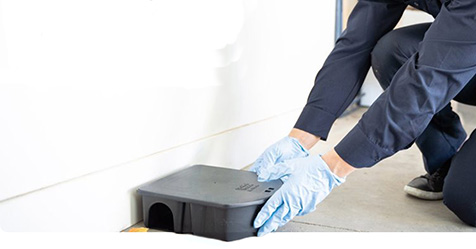Too often in-house cleaning staff and outside contractors behave more like adversaries than allies. The causes may be financial, political, or personal. This is unfortunate, because both parties have experience and knowledge to share.
It doesn’t have to be this way. Take the story of George, a cleaning contractor who started out as an in-house cleaner.
George’s father had retired as an in-house janitor at a school district after 15 years. It was George’s dream to get a day job cleaning the same elementary school as his father, but it didn’t work out that way. The town’s largest manufacturer closed, diminishing the tax base and forcing the school district to cut its cleaning budget by 20 percent. Instead of a day job in the school where his father had worked, George was forced to work nights for a cleaning contractor in order to make ends meet.
George soon found his previous experience and work ethic made him one of the premier members of the crew. One night, while cleaning a local bank, he began to think about starting his own cleaning contractor business. Within two years, he had 45 employees and 33 accounts, including a mall. In a few more years, he picked up an account with the school district where his father had worked that included two of the district’s elementary schools and the administration building.
At the school district, George worked with Kim, who was in charge of grounds and maintenance. George and Kim worked well together. George respected Kim’s knowledge and valued her input. Kim, knowing George’s familiarity with the schools, was open to suggestions.
The following principles made this in-house/contractor relationship successful:
Learning From Each Other
Whether you are a contractor or in-house staff, you don’t know everything and can often benefit from someone else’s ideas and knowledge. For example, the backpack vacuums that George’s company used were eventually integrated into the school district’s in-house cleaning process. The school district’s health and safety compliance programs were adopted by George’s company and enabled him to receive multiple accreditations to improve his business and get more contracts.
Sharing Resources
The school district purchased two spray-and-vacuum systems for the bathrooms that George’s company was able to use in elementary schools they cleaned. They also worked with George on using the same cleaning chemicals that were used in the non-contracted schools. George ended up spending less money on chemicals and, eventually, Kim and George standardized the cleaning system throughout the district. George also gave the school district a discount when they used his company’s truck-mounted units to clean carpets.
Experimenting With New Options
Kim was enthusiastic about data from the beginning. She monitored every aspect of her operations from her desk and often reviewed these reports in their monthly meetings. It took George a while to catch on, but once he found the right software and took some time to understand about quality control, he was hooked. It wasn’t long before he started to see improvement in his school buildings. Then he took the next step, using quality-control software for all his contracts.
It is important that managers on both sides of the fence show tolerance and respect for each other and model these attitudes for their employees. After all, they are both on the same side, the side that understands the value of cleaning.




